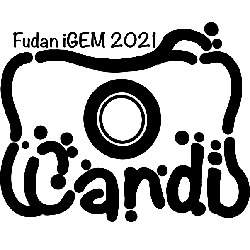Part:BBa_K3790014
The simplest form of dps promoter, a strong σS promoter
Introduction
RNA polymerase in E.coli. relies on combined with σ factors to recognize promoter sequences. Although σ70 factor is responsible for the transcription of most of the genes in the genome of E.coli.. E.coli. has other six kinds of alternative σ factors that are triggered in stressful conditions. By switching σ factors, the cell can dramatically change the whole transcription pattern in order to express specific proteins to help itself survive the bad environment.
Among the six alternative σ factors, only σS factor recognizes DNA sequences that are very similar to the typical promoter sequences recognized by σ70. Therefore, it’s usually thought that σS promoters rely on upstream elements, which are other protein-binding DNA sequences distributed upstream, to show their dependence on σS factors.
We mentioned that there’s no standard and well-characterized σS promoter in iGEM community. Therefore, we tested the attributes of the core regions of several σS promoters and selected those can be recognized by σS factors independently. Among them, the core region of the promoter controlling the expression of dps in E.coli. shows highest strength as a σS promoter.
Usage and Biology
The sequence regulated by this part shows high transcription rate in stressful conditions, such as carbon starvation. Typically, the expression of protein regulated by this part will be dramatically enhanced during platform stage, which means it can help efficiently express proteins when the density of bacteria is super high, thus reaching high amount of total expression.
WT T7 phage naturally has a gene product, gp5.7 (BBa_ Z0141), that acts as an efficient inhibitor of σS-dependent transcription. Therefore, you can simultaneously control the expression of all the proteins whose transcription is regulated by this part by controlling the expression of gp5.7, which brings lots of new possibilities to the construction of gene circuits.
Future development
This part is the simplest form of dps promoter. It’s short and can function as a σS promoter independently, so it can be freely fused with other regulatory parts such as operators to create new parts with new properties.
Characterization
Growth curve & GFP expression curve measurement
Plasmids (fig.1,2) were constructed and respectively transformed into DH5α E.coli.. Three independent colonies of each strain were picked out and cultivated at 37℃ overnight in LB culture medium with ampicillin. Then, the bacteria solution was diluted to 1% with 100 ml LB culture medium and shaked for 11.5 hours in 37℃. Samples of bacteria solution in each bottle were taken every 0.5 hour, and then stored in 4℃. After 11.5 hours of cultivation, all the samples were resuspended. OD600 and fluorescence intensity (excitation: 488nm, emission: 530nm) of each sample was tested twice with a plate reader.
All the statistics of fluorescence intensity were normalized by the following standard curve (fig.3).
As is shown in the chart (fig.4), the OD600 curve of both strand share similar trend. Both of the strains are at exponential stage before 5 hours, and then get into platform stage. However, the overall OD600 of the strain with pdps regulating GFP expression (the experimental group) is higher then the one with σ70 promoter controlling GFP (the control group). This may be explained that most of the genes relevant to rapid growth in E.coli. genome are regulated by σ70 factors, and pdps initiates the transcription occupying less σ70 factors then σ70 promoter dose.
Besides, the GFP/OD600 of the control group rises during exponential stage, but stop increasing during platform stage. (fig.5) The experimental group features much bigger increasing rate of GFP/OD600 during platform stage then exponential stage. This can be explained by the fact that σ70 is the major σ factors during exponential stage in E.coli, while σS takes the dominance during platform stage for carbon starvation.
Strength comparison test among six σS promoters
Six plasmids with different σS promoters regulating expression of GFP were constructed in the same form with fig.1. GFP expression amount of all of them after 11.5 hours cultivation are compared. (fig.6)
It can be seen in fig.6 that, among of these six σS promoters, pdps shows highest strength.
By the way, the suffix '_mut' involved a spot mutation at -13 location of the original sequence, which turn it into a 'C'. This mutation can significantly enhance the strength of σS promoters. Therefore, we mark the 'C' at -13 location of pdps as a feature.
T7 gene product 5.7 inhibition test
Gene product 5.7 is a gene expressed in the T7 infection mid-stage. It's a protein that can bind to σS factors and RNA polymerase of E.coli., thus inhibiting the transcription initiated by σS-RNAP complex.
We constructed the plasmid shown in fig.7 (T7 gp5.7 regulated by araC/pBAD) and co-transform it with the plasmid shown in fig.1 (GFP regulated by pdps) into DH5α E.coli.. We tested the growth curve and GFP expression curve of the strain under different level of arabinose induction. The time zero point is when arabinose is added.
Arabinose induction can activate the expression of T7 gene product 5.7 and thus it can inhibit σS promoter, including pdps. As is shown in fig.8, the expression of GFP regulated by pdps is decreased under arabinose induction.
Reference
Sequence and Features
- 10COMPATIBLE WITH RFC[10]
- 12COMPATIBLE WITH RFC[12]
- 21COMPATIBLE WITH RFC[21]
- 23COMPATIBLE WITH RFC[23]
- 25COMPATIBLE WITH RFC[25]
- 1000COMPATIBLE WITH RFC[1000]
//promoter
| None |








